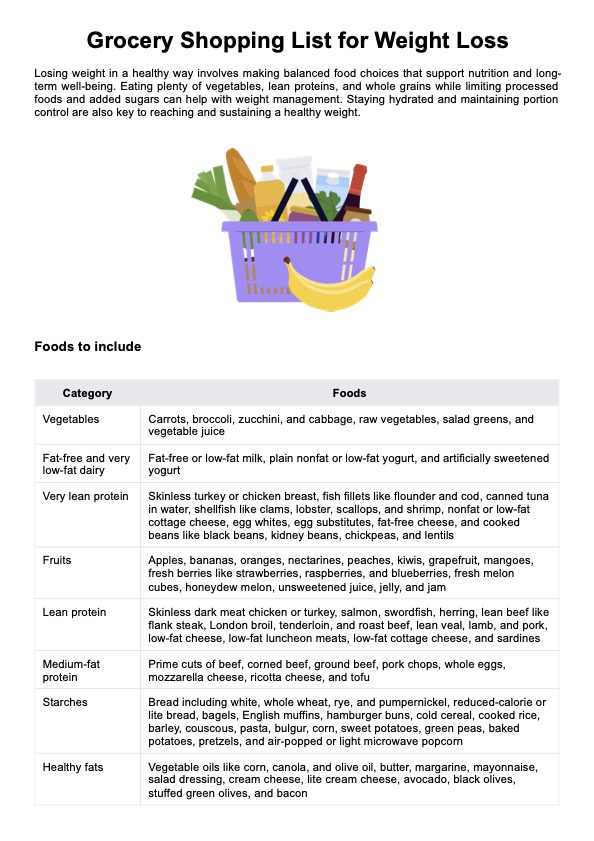Crafting a thoughtful weight loss grocery list is crucial to help manage weight, especially for these individuals. Focus on whole foods to support better blood sugar control. Also, always consult with your healthcare provider and registered dietitian for guidance.

Grocery Shopping List for Weight Loss
Get our Grocery Shopping List for Weight Loss to help clients choose healthy foods, avoid processed options, and plan balanced meals for better nutrition.
Use Template
Grocery Shopping List for Weight Loss Template
Commonly asked questions
Encourage them to buy in bulk, choose seasonal produce, and opt for store-brand items. Frozen fruits and vegetables are also great budget-friendly options that still provide essential nutrients.
Not necessarily. Frozen and canned foods can be healthy if they don’t contain added sugar, salt, or preservatives. Look for options like frozen vegetables, canned beans, and tuna packed in water for convenient and nutritious choices.
EHR and practice management software
Get started for free
*No credit card required
Free
$0/usd
Unlimited clients
Telehealth
1GB of storage
Client portal text
Automated billing and online payments











